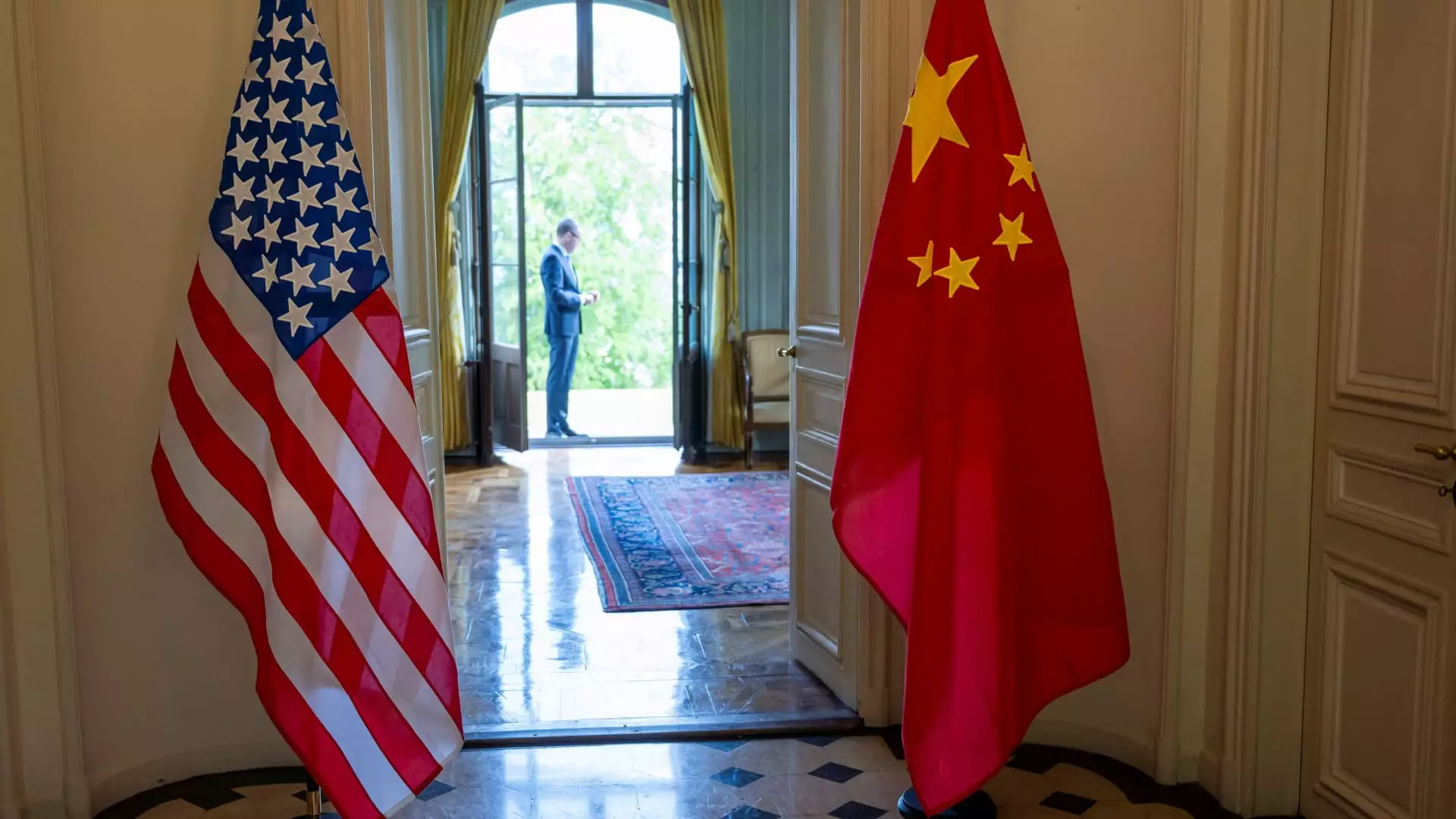In a world constantly shifting under the weight of economic pressures and geopolitical dynamics, the ongoing U.S.-China trade negotiations find themselves in a precarious position—as Treasury Secretary Scott Bessent aptly described, “a bit stalled.” The recent stagnation highlights a troubling reality: while both nations have attempted to navigate through tense waters, their commitments often remain unfulfilled and their ambitions collide. The recent agreement reached in Switzerland, intended to ease tariff tensions, might feel like a fleeting achievement rather than a solid foundation for future dialogues. A mere 90 days to roll back tariff spikes doesn’t address the underlying complexities that are deeply entrenched in both economies.
An agreement that involves temporary tariffication adjustments is akin to a band-aid on a much deeper wound. What is required is a genuine commitment from both sides to engage in the sort of substantive discussion necessary to untangle the web of tariffs and trade restrictions. Bessent suggests that direct talks between President Trump and President Xi Jinping could pave the path forward, yet past experiences paint a different picture. It is naive to expect that mere dialogue between the leaders will easily disentangle thorny issues without serious groundwork laid by lower-level officials.
The Technology Abyss
The realm of technology restrictions serves as one of the prime flashpoints of contention. The U.S. has enacted various tech-related limitations that, unsurprisingly, have drawn sharp rebukes from Beijing. China’s response has been tepid at best, suggesting that the two countries remain worlds apart on agreements that could foster a more reliable partnership. By refusing to loosen controls over critical exports like rare earth elements, China contradicts expectations of collaboration laid out in initial discussions. The rhetoric surrounding these controls reflects not just economic defensiveness, but also a broader strategy to maintain national sovereignty in an increasingly interconnected world.
Despite ongoing communication efforts—evident in the recent exchanges between trade officials—the complexities and stakes have escalated significantly. Rare earths are not merely commodities; they are linchpins in global technology supply chains, essential for everything from smartphones to military hardware. Therefore, unresolved disputes over these resources could disrupt not only bilateral relations but also international markets. It is almost poetic; technology, which was once heralded as a tool for globalization, has now become a battleground for national interests and competitive edge.
Geopolitical Ramifications and Unjust Policies
Amid these trade tensions, the U.S. decision to revoke visas for Chinese students adds another layer of complexity to an already fraught relationship. The implications of such actions are profound. From a liberal perspective, erecting barriers to education runs counter to the very principles that democracy and progress claim to uphold. The notion that prohibiting students from studying in the U.S. could somehow strengthen national security is fundamentally flawed; education fosters mutual understanding and can serve as a bridge between cultures rather than a wall.
Chinese officials, observing this pattern, have described the policy as “fully unjustified.” It seems that while trade talks stall, minor actions taken by either side are intended to assert dominance rather than seek reconciliation. The undercurrents of fear and distrust manifest in these decisions signify a deeper schism, one fraught with misunderstanding and the potential for retaliation.
Communicating for Convergence
Striking an effective balance requires not just dialogue but a genuine exchange of perspectives, something current communications lack. A substantial commitment must be made for trade negotiations to yield real results. Communication is more than mere formality; it is a necessary process of understanding where both sides stand—which has been fundamentally missing from the latest talks. Real progress is contingent upon leaders who are willing to lay their cards on the table and navigate the difficult path toward agreement rather than stacking their preferences and predilections atop one another.
If the goal is mutual benefit, both U.S. and Chinese leadership must carve out time for meaningful deliberations. Beyond ideology and immediate self-interest, there exists a shared future that is at stake—one filled with opportunities for cooperation, innovation, and economic prosperity. The question persists: will they step beyond a litany of grievances and genuinely engage with one another? The tools for resolution and collaboration are there; it’s a matter of whether both parties can muster the courage to embrace them.



Leave a Reply